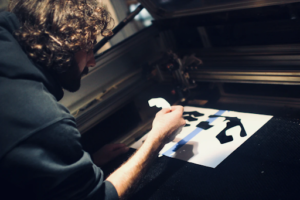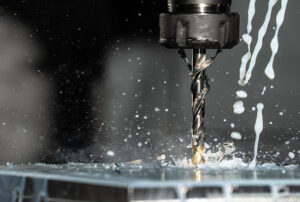These days, you can easily find plenty of free laser cut files out there on the internet. But before you download and start cutting, you’ll want to make sure you have the right file format. If you get this wrong, you could end up wasting material and time or even ruining your project completely! Click here to view more and find out which file format laser cutters use and other useful tips about using the files you find online.
SVG Files
The abbreviation SVG stands for Scalable Vector Graphics, which means you can enlarge or reduce these files to any size without losing quality. But what makes SVG files popular is that they are fully editable and support animation. However, one disadvantage of SVG files is that they cannot be printed on paper with an inkjet printer.
Most laser cutters use DXF (with a dxf extension) as their preferred file format. This format is used by CAD programs like SolidWorks and AutoCAD. So if you want your design in vector form (as opposed to a raster image), use SVG instead of JPEG or PNG.
An added benefit is that SVG files tend to be smaller than other types of vector file formats such as DXF. For example, a DXF file measuring 100 x 50 mm only takes up 0.7 MB compared to 2 MB for an SVV file of equal dimensions.
Once you finish installing and setting up your chosen software tool correctly, converting between different file formats is easy and not time-consuming at all. Simply select File -> Save As from within Inkscape’s menu bar and make sure SVG is selected as the output format. Then choose DXF as input format. Voilà! Your SVG file is now ready to be loaded into your favorite CAM program.
If you’re using Fusion 360 and really don’t feel like learning how to export an STL file, there’s even more good news. Fusion 360 allows you to convert DXFs into line segments directly within its freeform modelling environment; and, you don’t even need additional CAM tools.

DXF Files
The most common file format used in laser cutting is DXF. The initials stand for Drawing Exchange Format. This name reflects its original purpose: to help architects and engineers exchange drawings between their AutoCAD software and other CAD systems.
This cross-platform capability makes DXF a highly convenient format for cutters and designers to use. You can transfer files easily via email or upload to storage sites like Dropbox, Google Drive, and Onedrive.
Most importantly, popular vector design programs including Adobe Illustrator and CorelDRAW support DXF as a native output format.
For these reasons, it’s one of our preferred formats when we make files available on our site. But what do you really need to know about using free laser cut files in DXF format with your cutter?
What does DXF do?
That would depend upon which version of DXF you’re looking at, actually.
But generally speaking, all versions are capable of producing high-quality plots; it doesn’t matter whether you originally create them in an architectural program like Autocad or another design application.
For example, basic data points such as line weight and color can be specified independently for each layer in a drawing (as well as globally across all layers) with great precision.
Perhaps more importantly though, DXF supports unlimited nesting levels within a single drawing. This means that multiple objects within one file can fit together accurately; no matter how deeply those objects are nested inside each other.
Cutting Advice For All Files
If you’re using a vector-based CAD file, such as a .dxf or .svg, there’s a good chance your laser cutter can open it. But before you send off your design for cutting, it’s important to understand some key principles regarding vector files and cutters.
While most cutters support DXF files on their native programs (i.e., Corel Draw), not all of them support Vectric’s Vcarve Pro software. So if you go with a .vpc or .vtp file, always check first. Make sure that information matches what works best with your machine model. Also, keep in mind that both PC and Mac users should try saving their files in both formats. This is because Macs tend to have trouble with certain kinds of PC-formatted files.
And finally, be aware that any errors made during your digital layout will likely carry over into your physical product. So double-check everything before sending it off!
Final Thoughts on Choosing the Right Format of Free Laser Cut Files

Which file format should you use for laser cutters? It’s not a trick question.
CNC machines are specialized tools that use files in special formats. These free laser cut files instruct them on what to do and where to move. So the easiest way to tell which file format your machine uses is to ask one of our customer service team members. That’s what they’re here for—to help you find and select a cutter, learn how it works, and start cutting!
Happy cutting!





